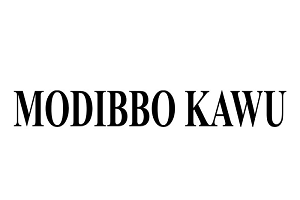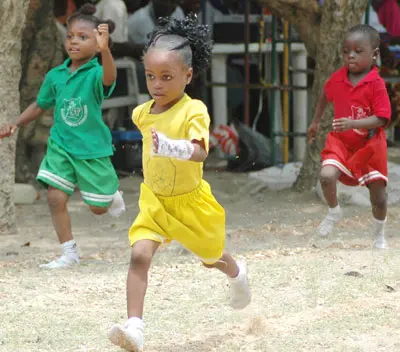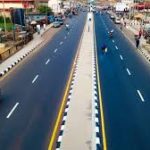LAST weekend, I met Daniel Amokachie, ex-International soccer star and assistant coach of our national team. Naturally, we spoke about the current state of our football and he gave me interesting insights into problems dogging our national game.
I also reminded him of an interview he gave sometime last year or so that I used for a write up on Nigerian sports today. Amokachie had lamented the collapse of sports in the public school system, a problem that people of my generation are very much aware of.
The football star said there was no way the country could attain its latent potentials if the public school system was not reinstated, properly rehabilitated to heights we knew in the past and even surpassed, for the challenges of the Twenty First Century.
The place of sports: The discussion triggered nostalgia for me about Ilorin during the 1960s, and sports place in the formation of our consciousness.
From the primary school level, sports were central to the overall development of the child. And each school had very active sports traditions and there were regular competitions between schools. United School, Okesuna Primary, Saint Barnabas, Baboko Primary, Baptist School, Surulere, Ansarul Islam, to mention just a few of the schools of those years, had good sports programmes and each one had good football fields that were also patronized by other members of the community.
Something unique
The United School, which I attended, seemed to have something unique about it. It was where the Kwara State Academicals, coached by the legendary Usman Adenuja, trained when they were in camp. Adenuja had been the coach of the Northern Regional team, the Northern Lions, before the creation of states in 1968, when he returned as Chief Coach of Kwara state.
Generations of school stars train every evening: Busari Ishola, who captained the Nigerian Academicals; Rasheed Gbadamosi (Baaye), who is still a coach in Ilorin; Baba Eleran, one of the most celebrated young players from Kwara who also played for Nigeria’s academicals; Olayiwola, the goalkeeper; Ahmed Yahaya (Atinga), who played football and was also a track and field star!
The main teams in Ilorin were Tate & Lyle football team; Philip Morris team and the P&T team. The stars included Isyaku and Sidiku, remarkable defenders; Ajala from P&T; Accro (he got a send off when he left for the USA to study); Christian Ulonta, who packed remarkable shots in his legs; the star goalkeeper, Magnet Agodirin; Janjala, left-footed, and the first player I ever saw score a goal from a corner kick!
And the most charismatic footballer of that generation, also captain of the Ilorin Town team, Moshood Olanrewaju Jaji (JAAJIII!)! He came from a famous Ilorin family, had grown up in Ghana and had remarkable swagger!
The finals of the Kwara State Challenge Cup, invariably pitched the Ilorin team against Offa. It resembled old tribal warfare by other means! The Offa team was ALWAYS so stubborn and had an intrepid defender, a native of Ilorin from the Gegele area of the city, whose nickname was AMBURE!
He was at the receiving end of the opprobrium of the partisan Ilorin crowd, who won’t understand why an Ilorin man would be the one that will not allow Ilorin to score against Offa. The funny side to the story was that Ilorin’s goalkeeper, “Magnet” Agodirin, was from Offa.
He was as professional as Ambure and kept the team from his hometown, Offa, at bay. Well, there was predictability about the games, because Ilorin ALWAYS won by a lone goal; most of the time, a penalty kick and JAAJI would step up. He ALWAYS played to the right side of the goalkeeper and always scored!
Ilorin’s first ‘stadium’: By 1970, the first “stadium” opened in Ilorin. It was the police ground, and roofing sheets were used to cover the pitch and a seating area, often occupied by local VIPS,was also erected. The first game that opened the “stadium” was advertised on radio for weeks, and for coming first in our weekly tests, I was given money for “Fan Ice” and to enter the stadium on the opening day, to watch the first ever game.
It was between Ilorin Rovers (the town team) and the Mighty Jets of Jos. All the great stars were there: Lawandi Datti was in goal, Ismaila Mabo; Olayiwola Olagbenro; Garba Okoye (who I still think is the best player Nigeria ever produced!) and the others. That game ended 2-2, but it was Christian Ulonta who scored the first goal in that haloed venue; he “nutmegged” Ismaila Mabo, then picked a race towards goal and unleashed thunderstorm that Lawandi Datti couldn’t do a thing about.
Later on, Mighty Jets scored two goals in rapid succession and at half time, Folorunsho Gambari, Gambus, who travelled all the way from Bacita, where he worked at the Nigerian Sugar Company, would spare the blushes of the local community, and got the draw! It was a fitting way to open the first local “stadium” in Ilorin.
A remarkable old man, the late Alhaji Sadauki, from the Hausa community in the city, became a permanent fixture of the stadium. He walked the touchline from end to end, in white kaftans. The pockets bulging with kolanuts that he gave freely to people. He was the side attraction to games in Ilorin.
Attraction to games
He shouted from the beginning to the end of every game: “MARK ONE, ONE”! “MARK ONE, ONE”!! That became his nickname! Eventually, he expressed his love for football in a more socially responsible direction by starting a football team, SADAUKI Rocks. It was the first team outside those directly tied to the big companies, like Tate & Lyle.
And it was a game against Tate & Lyle that increased SADAUKI’s popularity in Ilorin. It was played at the Mount Carmel College field, at Oloje, which was a considerable distance from my neighbourhood of Ilorin and believe me we walked the distance to watch the game, on a weekday afternoon, in 1971!
The star of that team and game has remained my friend till today. Baba Ali was a gangling, right out, as wingers were called in those days. He was the only player who never wore soccer boots and the crosses he sent into the area, confounded my favourite Ilorin defender of those years, Sidiku. SADAUKI won the game. It could have remained a local affair, except that the financier, Alhaji”MARK ONE, ONE” died and the team was taken over by a Lagos-based son of Ilorin, Alhaji Yusuf Adebayo AbudulSalam, who renamed the team ALYUFSALAM ROCKS of Ilorin. Like a meteor, it burnt brightly on the Nigerian football firmament for a shortwhile, with its beautiful brand of football, personified by Nalado and some Ghanaian imports. They reached the 1976 Challenge Cup final, which they eventually lost to Enugu Rangers. It was a bitter blow for the people of Ilorin!
Elaborate structure
By the time I entered Government Secondary School, Ilorin, in January 1972, we found an even more elaborate structure of sports and a conscious integration of sports into the school curriculum. The late Agbo Abegunde was a remarkable educationist, administrator and sports lover. Under him, our sports teams flowered, but we were not unique or alone in that sense, because all over the old Kwara state, the various schools were run the same way: GSS Okene, Offa Grammar School, Titcombe College Egbe, Oro Grammar School, Esie/Iludun Grammar School, even the Queen Elizabeth School, Ilorin. They had elaborate sports infrastructure and students proudly excelled in sports and never saw a contradiction with doing well in their studies. This was the way it was all over Nigeria! My school had facilities for football, track and field, hockey, badminton, lawn tennis, table tennis, basketball, volleyball, hockey, cricket, squash rackets and fives. Today these facilities have collapsed along with the schools. The United School was literally obliterated, when new roads and shopping complexes ate up the expansive fields and Okesuna school lost its field and not much remains of Saint Barnabas’ sports field as well.
State of public schools: As we sink our teeth deeper into the challenge of politics and elections, I hope those asking our votes will give themselves the pause and reflect on the state of the public school system in our country today and their alarming deterioration.
The schools of old are a tragic shadow of what they used to be or ought to be. This is a very young country with 63% of our population under the age of 25; in fact the median age is around 18. We have to develop national sporting infrastructure spreading from states to local and school levels, to give our children the ambience and facilities for sports, as part of their all-round education.
Sports also enhance the competitive spirit and triggers patriotic fervor. The young person who excels sufficiently to wear the colours of his or her country, develops a perspective of patriotism that is a lived reality far superior to preachments and harangues.
From the local story I’ve told today, steeped in so much nostalgia for me, it’s clear that a poorer Nigeria of the 1960s-70s did it then, yet today, a lot more money is thrown around and conditions are poorer. The public school system were a source of pride, today we don’t care nor send our children there because they have collapsed. But we can do even better if there is a willpower and the patriotic commitment to genuinely serve our country!


